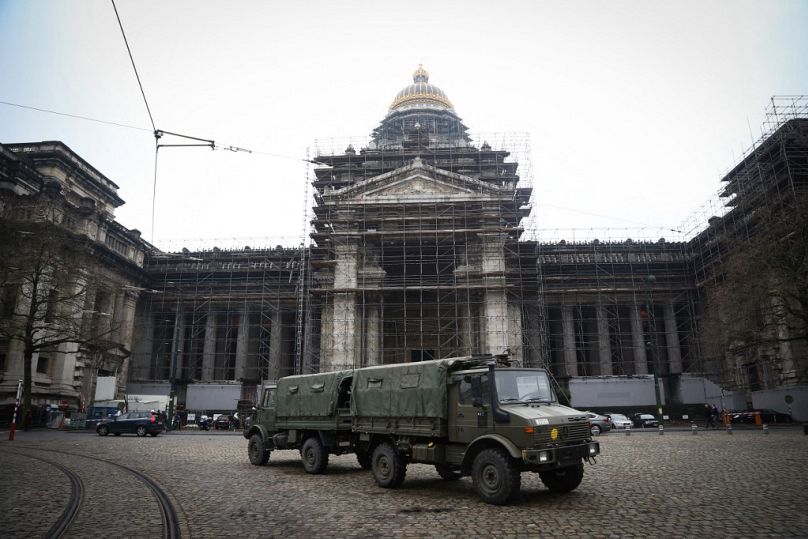Belgium’s federal government will put €1.5 million aside to renovate the scaffolding, which was put up in 1984. The work is predicted to be completed by 2030.
The Brussels Palais de Justice has been a prisoner of its scaffolding for nearly 40 years.
Inside the monumental building, reputed to be the l****argest constructed in the 19th century, water is leaking causing rubble to fall, the basement is in a bad state and there are holes in the ceiling.
But now the green light has been given to renovate the decrepit palace.
"There is quite a discomfort, there are courtrooms and offices that look more like slums than rooms where justice is delivered," says Jean de Codt, President of the Court of Cassation.
At 160 by 150 meters and a total ground surface of 26,000 m², the building --and its scaffolding --can be seen from most parts of the city.
Belgium’s federal government will put €1.5 million aside to renovate the scaffolding, which was put up in 1984.
"It's a little bit like if plasters had been put on the Mona Lisa. It is an extraordinary work of art that is disfigured, that is gagged, as if a mask had been put on it that prevents from speaking," says de Codt.
"It is important that this scaffolding is taken down so that the Palais can once again play its role as a book of stone".
Nathalie Minnen, chief clerk at the French-speaking court of First Instance says the corridor "is at risk of collapse. In places, the ground is subsiding and there is no guarantee that the ground is stable."
There is concern about holding trials and for the proper conduct of hearings, according to Minnen, who believes the building is a symbol of justice for the people who work there. It "honestly cannot remain in this state," she says. "I think it is high time to act. That's why I made it a priority."
Reinforcing the scaffolds is the first step in the renovation works. After the façade on Place Poelaert, which includes the entrance, the esplanade and the base of the palace’s dome will be restored, as will the façades on Rue des Minimes, Rue aux Laines and Rue de Wynants.
"When we installed this scaffolding in 1984, it was to do work that was never done. And so that's what's actually a bit annoying in my position, I admit," says Mathieu Michel, Secretary of State for building renovation.
"So the first thing to do is to reinforce the scaffolding to be able to carry out the work that was planned in 1984."
"And you can imagine that if they were planned in 1984, they are all the more indispensable today," says Mathieu Michel, Secretary of State for building renovation."
The full renovation is predicted to be completed by 2030.












